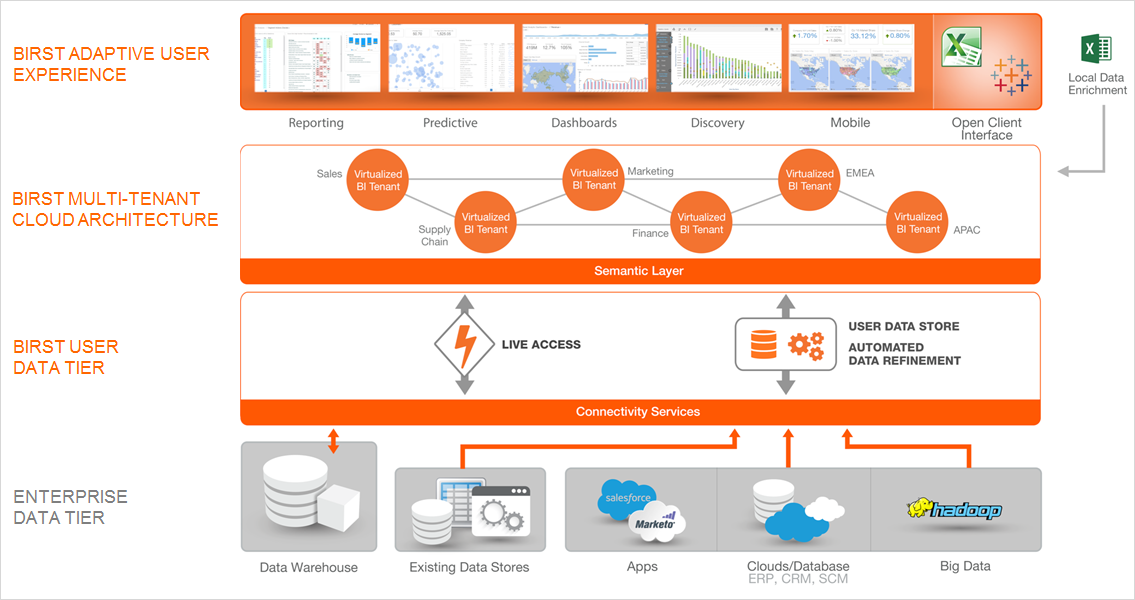Introduction to Birst
Birst delivers accurate, actionable content to enable business decisions. Birst combines data from different sources in a single Networked BI platform. Reports from that data, including charts, tables, geo maps, and key performance indicators, are organized into dashboards for presentation in a browser or a native mobile app. External content from other web pages can also enhance the end user experience.
Birst is available as a multi-tenant cloud architecture or as an Appliance for in-house deployments.
The Birst Networked BI platform combines the capability, scale, and data governance required for enterprise data with data from end users to create a blended data platform. Centralized and decentralized teams can leverage trusted corporate data along with local data for agile, robust business analytics.

The Birst Connectivity Framework provides access to data in the enterprise, whether it is in an existing data warehouse, in flat or structured files, or in cloud business applications. Birst extracts data from those sources, then organizes and models it into a user data store, making the data ready for analysis. Birst does this using Automated Data Refinement (ADR) and a transformation language (ETL) to automatically merge data and create the data store, unlike the lengthy and complex work needed to create a traditional data warehouse. The user data store unifies your data from multiple sources, refines it for business use, and provides a consistent view of all data to all users.
To augment the content in the user data store, Birst Live Access can directly query on-premise data sources in real time.
In addition, end users can upload local "sandbox" data from desktop files to blend with the data store and quickly create powerful reports. Reports can be shared with other users as PDFs in email on an ad-hoc basis or as regularly scheduled notifications.
Continue learning about Birst: